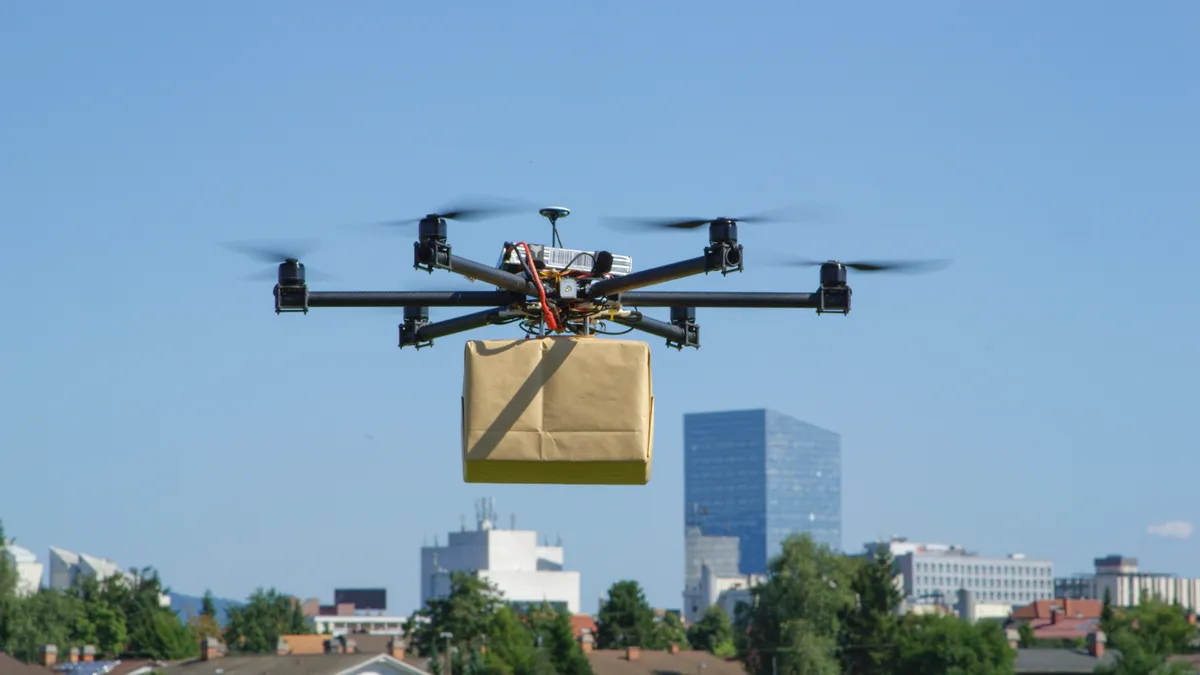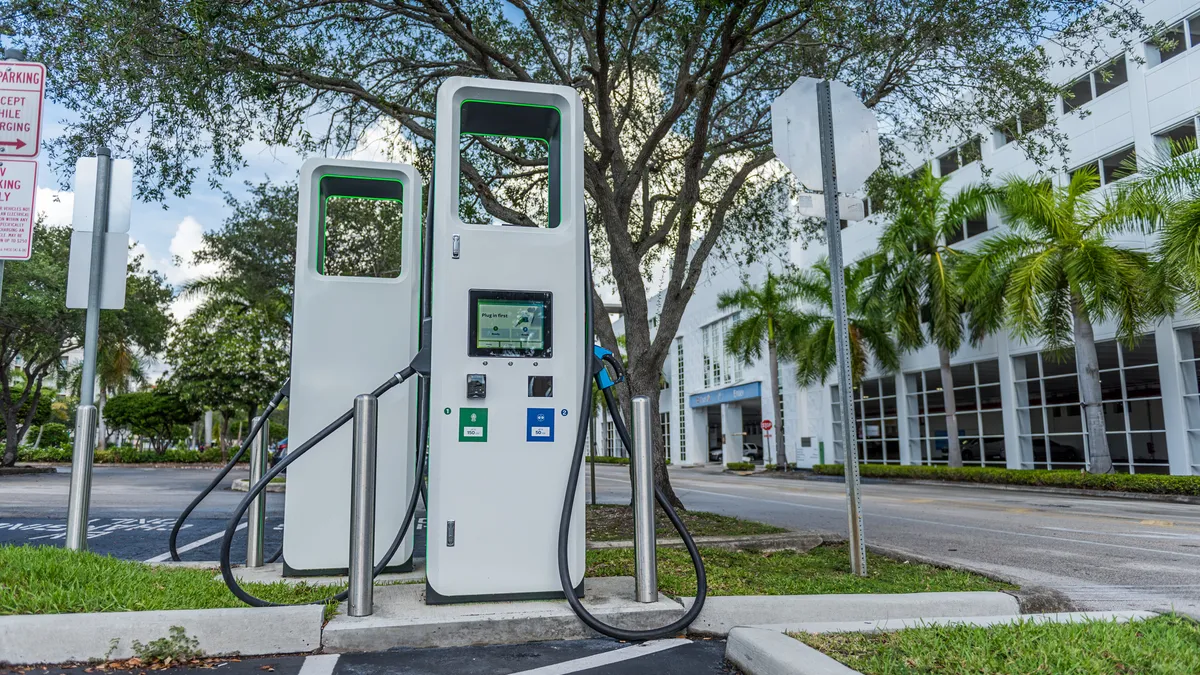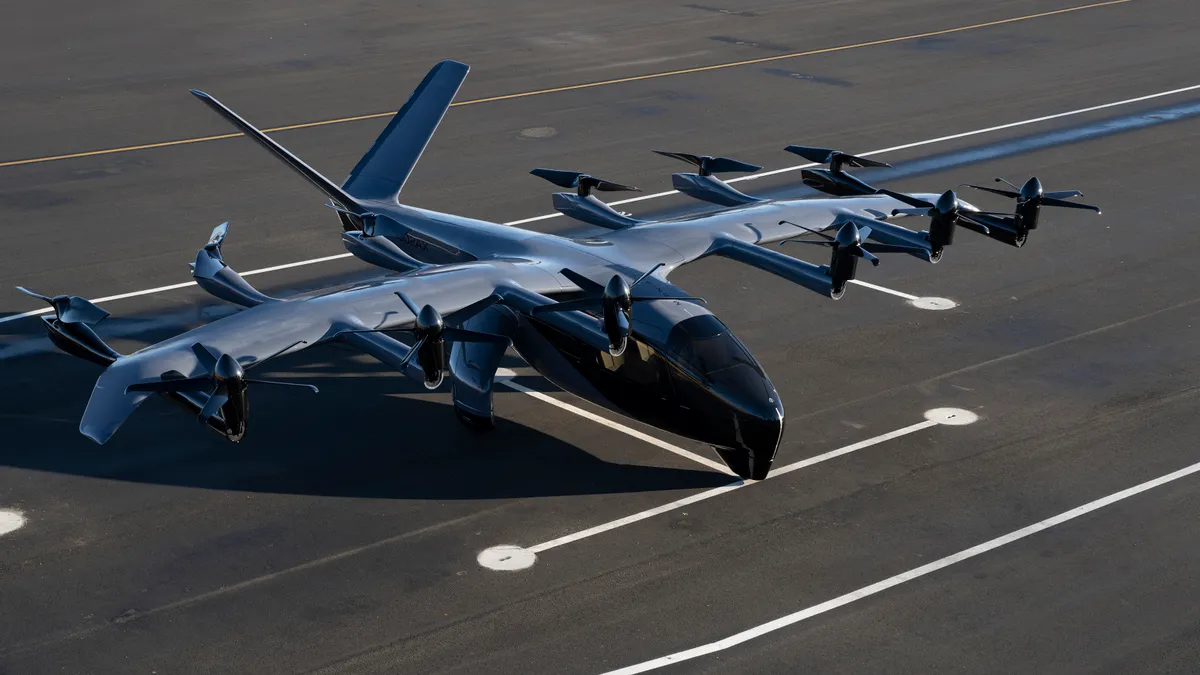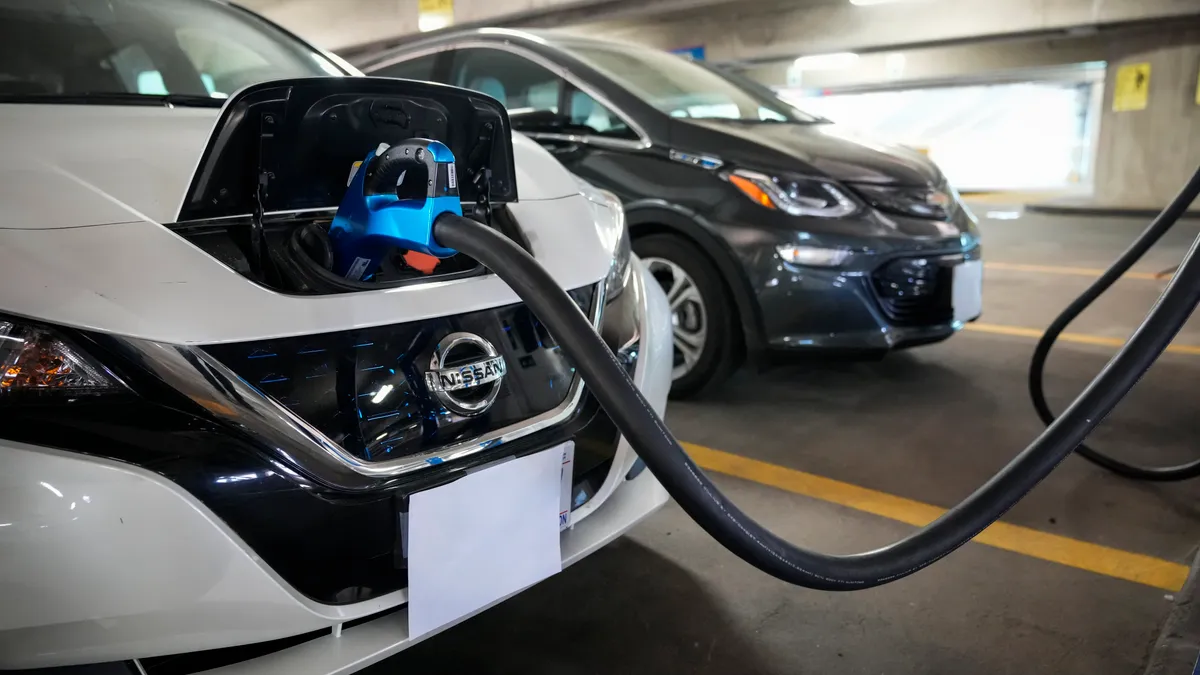Dive Brief:
-
Forthcoming rules from the Federal Aviation Administration could help drone delivery take flight in the U.S., panelists said this month during a discussion at the CES conference in Las Vegas.
-
Drone delivery has yet to become commonplace, partly due to federal regulations limiting remote pilots' ability to fly a drone unless they can see it throughout an entire flight or meet certain other requirements, the panelists said.
-
Abigail Smith, deputy executive director at the FAA’s Unmanned Aircraft Systems Integration Office, said the agency will propose new regulations this year to support greater drone use, including delivery, saying that “safety is our North Star.”
Dive Insight:
Although drone operators can get waivers from the FAA that allow them to bypass so-called “visual line of sight” rules if they prove they can do it safely, such requirements discourage businesses and other organizations from pursuing drone delivery, panelists said.
An FAA committee in March published a report recommending changes to visual line of sight and related regulations. In the report, the committee recommended that the agency standardize “an acceptable level of risk” for all uncrewed aircraft systems, change right-of-way rules, adopt new pilot training requirements, create new regulations for which uncrewed aircraft can operate beyond visual line of sight, and establish a non-mandatory framework that allows third-party services to support beyond visual line of sight operations.
Smith said during the conference panel the agency will base its proposed regulations on the report and stakeholder feedback.
Phillip Wallace, director of federal government affairs at Walmart, said that although Walmart and other retailers have already started drone deliveries, it is “very exciting” that the U.S. is developing a coordinated national framework to ease drone operations.
Drone Express CEO Beth Flippo said the FAA should require all crewed and uncrewed aircraft to transmit information about their GPS location, altitude, ground speed and other data to ground stations and other aircraft under a system called Automatic Dependent Surveillance – Broadcast. She said that such a requirement would ensure air safety as more and more drones operate in the U.S. Currently, only specific crewed aircraft must transmit such information.
Harrison Wolf, director for global aviation policy at Zipline, said that when it comes to transmitting information to other aircraft and air traffic control, the FAA should adopt a risk-based approach similar to that taken in Europe, which can approve significantly more advanced operations much more quickly.
Correction: We have updated Harrison Wolf's comment on data transmission to correct a misstatement he reported making at the event.


















